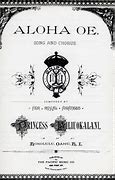
Throughput of Pure ALOHA
Let 𝑇 be the frame time, i.e. the time required for 1 frame to be transmitted.
Let G be the number of transmission attempts per frame time.
The probability that 𝑘 frames are generated during the frame time is given by the Poisson distribution−
$$P(k)=\frac{G^k e^{-G}}{k!}$$
From this we can say that the probability that 0 frames are generated ( 𝑘k = 0 ) during the frame time is $e^{-G}$.
In case of pure ALOHA, the vulnerable time period so that collision does not occur between two frames is equal to two frame times, i.e. 2T𝑇. In 2T time,average number of transmission attempts is 2G.
The probability that 0 frames are initiated in the vulnerable time period will be −
The throughput, 𝑆, is calculated as the number of transmission attempts per frame time, 𝐺, multiplied by the probability of success, 𝑃(0).
Pure aloha v/s slotted aloha
Now, let's see the comparison chart between pure aloha and slotted aloha. We are comparing both terms on the basis of characteristics to make the topic more clear and understandable.
From the above discussion, it can be said that slotted aloha is somewhat better than pure aloha. It is because there is less possibility of collision in slotted aloha.
So, that's all about the article. Hope it will be helpful and informative to you.
Plot the characteristic curve of throughput versus offered traffic for a Pure and Slotted ALOHA system
NOTE: NetSim Academic supports a maximum of 100 nodes and hence this experiment can only be done partially with NetSim Academic. NetSim Standard/Pro would be required to simulate all the configurations.
ALOHA provides a wireless data network. It is a multiple access protocol (this protocol is for allocating a multiple access channel). There are two main versions of ALOHA: pure and slotted. They differ with respect to whether or not time is divided up into discrete slots into which all frames must fit.
In Pure Aloha, users transmit whenever they have data to be sent. There will be collisions and the colliding frames will then be retransmitted. In NetSim's Aloha library, the sender waits a random amount of time per the exponential back-off algorithm and sends it again. The frame is discarded when the number of collisions a packet experiences crosses the the "Retry Limit" - a user settable parameter in the GUI.
Let ''frame time'' denotes the amount of time needed to transmit the standard, fixed-length frame. In this experiment point, we assume that the new frames generated by the stations are modeled by a Poisson distribution with a mean of N frames per frame time. If N > 1, the nodes are generating frames at a higher rate than the channel can handle, and nearly every frame will suffer a collision. For reasonable throughput, we would expect 0 \< N \< 1. In addition to the new frames, the stations also generate retransmissions of frames that previously suffered collisions.
The probability of no other traffic being initiated during the entire vulnerable period is given by$\ e^{- 2G}\ $which leads to $S = \ G \times e^{- 2G}$ where, S is the throughput and G is the offered load. The units of$\ S$ and $G$ is frames per frame time.
G is the mean of the Poisson distribution followed by the transmission attempts per frame time, old and new combined. Old frames mean those frames that have previously suffered collisions.
The maximum throughput occurs at $G = 0.5$, with $S = \frac{1}{2e}$, which is about 0.184. In other words, the best we can hope for is a channel utilization of 18%. This result is not very encouraging, but with everyone transmitting at will, we could hardly have expected a 100% success rate.
In slotted Aloha, time is divided up into discrete intervals, each interval corresponding to one frame. In Slotted Aloha, a node is required to wait for the beginning of the next slot in order to send the next packet. The probability of no other traffic being initiated during the entire vulnerable period is given by $e^{- G}$ which leads to $S = G \times e^{- G}$. It is easy to compute that Slotted Aloha peaks at G = 1, with a throughput of $s = \frac{1}{e}$ or about 0.368.
What is ALOHA and its type?
ALOHA is a basic method for sending data over a shared network. It was created to manage how data is transmitted and to deal with collisions when two devices send data at the same time.
There are two types of ALOHA:
Throughput of Pure ALOHA
The probability of successful transmission (S) can be derived from the probability that no other packets are sent during the vulnerable time period. This is given by:
ALOHA is a medium access control (MAC) protocol for transmission of data via a shared network channel. Using this protocol, several data streams originating from multiple nodes are transferred through a multi-point transmission channel. There are two types of ALOHA protocols – Pure ALOHA and Slotted ALOHA.
In pure ALOHA, the time of transmission is continuous. Whenever a station has an available frame, it sends the frame. If there is collision and the frame is destroyed, the sender waits for a random amount of time before retransmitting it.
After transmitting a frame, a station waits for a finite period of time to receive an acknowledgement. If the acknowledgement is not received within this time,the station assumes that the frame has been destroyed due to collision and resends the frame.
A collision occurs if more than one frame tries to occupy the channel at the same time. The situation is depicted in the following diagram−
What is the full form of ALOHA?
The full form of ALOHA is Advocates of Linux Open-source Hawaii Association.
Difference between Pure aloha and Slotted aloha
In this article, we will discuss the comparison between Pure aloha and Slotted aloha along with their separate discussion. Aloha is the random access protocol having two categories that are pure aloha and slotted aloha.
Pure aloha is used whenever data is available for sending over a channel at stations, whereas slotted aloha is designed to overcome the problem of pure aloha because there is a high possibility of frame hitting in pure aloha. Similarly, we will see the comparison chart between pure aloha and slotted aloha. So, without any delay, let's start the topic.
Before discussing the types of aloha, let's first see a brief description of aloha.
Aloha is designed for wireless LAN (Local Area Network) but can also be used in a shared medium to transmit data. In aloha, any station can transmit data to a channel at any time. It does not require any carrier sensing.
Pure aloha is used when data is available for sending over a channel at stations. In pure Aloha, when each station transmits data to a channel without checking whether the channel is idle or not, the chances of collision may occur, and the data frame can be lost.
When a station transmits the data frame to a channel without checking whether the channel is free or not, there will be a possibility of the collision of data frames. Station expects the acknowledgement from the receiver, and if the acknowledgement of the frame is received at the specified time, then it will be OK; otherwise, the station assumes that the frame is destroyed. Then station waits for a random amount of time, and after that, it retransmits the frame until all the data are successfully transmitted to the receiver.
There is a high possibility of frame hitting in pure aloha, so slotted aloha is designed to overcome it. Unlike pure aloha, slotted aloha does not allow the transmission of data whenever the station wants to send it.
In slotted Aloha, the shared channel is divided into a fixed time interval called slots. So that, if a station wants to send a frame to a shared channel, the frame can only be sent at the beginning of the slot, and only one frame is allowed to be sent to each slot. If the station is failed to send the data, it has to wait until the next slot.
However, there is still a possibility of a collision because suppose if two stations try to send a frame at the beginning of the time slot.
Frequently Asked Questions on Pure ALOHA – FAQs
Key Features of Pure ALOHA
For more details please refer Derive the efficiency of Pure ALOHA protocol and Differences between Pure and Slotted Aloha article.
Pure ALOHA is an early and simple method for sending data over a shared network, where devices transmit whenever they have data to send. It doesn’t check if the channel is free, leading to frequent collisions when two devices send data at the same time. This results in a maximum efficiency of about 18.4%, meaning many transmissions are lost due to these collisions.
Offered load and throughput calculations
Using NetSim, the attempts per packet time (G) can be calculated as follows.
$$\ \ G = \ \ \frac{Number\ of\ packets\ transmitted \times PacketTime(s)\ }{SimulationTime\ (s)}$$
where, G is Attempts per packet time. We derive the above formula keeping in mind that (i) NetSim's output metric, the number of packets transmitted, is nothing but the number of attempts, and (ii) since packets transmitted is computed over the entire simulation time, the number of "packet times" would be $\frac{SimulationTime(s)}{PacketTransmissionTime(s)}$ , which is in the denominator. Note that in NetSim the output metric Packets transmitted is counted at link (PHY layer) level. Hence MAC layer re-tries are factored into this metric.
The throughput (in Mbps) per packet time can be obtained as follows.
$$\ \ S = \ \ \ \ \frac{Number\ of\ packets\ successful \times PacketTime(s)}{SimulationTime\ (s)}$$
where, S = Throughput per packet time. In case of slotted aloha packet (transmission) time is equal to slot length (time). The packet transmission time is the PHY layer packet size in bits divided by the PHY rate in bits/s. Considering the PHY layer packet size as 1500B, and the PHY rate as 10 Mbps, the packet transmission time (or packet time) would be $\frac{1500 \times 8}{10 \times 10^{6}} = 1200\ \mu s$.
In the following experiment, we have taken packet size as 1460 B (Data Size) plus 28 B (Overheads) which equals 1488 B. The PHY data rate is 10 Mbps and hence packet time is equal to 1.2 milliseconds.
Open NetSim and click on Experiments> Legacy Networks> Throughput versus load for Pure and Slotted Aloha> Pure Aloha then click on the tile in the middle panel to load the example as shown in below Figure 15‑1.
Figure 15‑1: List of scenarios for the example of Throughput versus load for Pure and Slotted Aloha
NetSim UI displays the configuration file corresponding to this experiment as shown below Figure 15‑2.
Figure 15‑2: Network set up for studying the Pure aloha
Pure Aloha: Input for 10-Nodes sample
Step 1: Drop 10 nodes (i.e. 9 Nodes are generating traffic.)
Node 2, 3, 4, 5, 6, 7, 8, 9, and 10 generates traffic. The properties of Nodes 2, 3, 4, 5, 6, 7, 8, 9, and 10 which transmits data to Node 1 are given in the below table.
Step 2: Wireless Node Properties
Wireless Node Properties
Interface1_Wireless (PHYSICAL_LAYER)
Data Rate (Mbps) 10
Interface1_Wireless (DATALINK_LAYER)
Retry_Limit 0
MAC_Buffer FALSE
Slot Length(µs) 1200
Table 15‑1: Wireless Node Properties
(Note: Slot Length(µs) parameter present only in Slotted Aloha Wireless Node Properties Interface_1 (Wireless))
Step 3: In Adhoc Link Properties, channel characteristics is set as No Path Loss.
Step 4: Application Properties
Application_1 Properties
Application Method Unicast
Application Type Custom
Source_Id 2
Destination_Id 1
Transport Protocol UDP
Packet Size Distribution Constant
Inter Arrival Time Distribution Exponential
Table 15‑2: For Application_1 Properties
Step 5: Plots are enabled in NetSim GUI.
Step 6: Simulation Time- 10 Seconds
Note: Obtain the values of Total Number of Packets Transmitted and Collided from the results window of NetSim.
Input for 20-Nodes sample
Step 1: Drop 20 nodes (i.e., 19 Nodes are generating traffic.)
Nodes 2, 3, 4, 5, 6, 7, 8, 9, 10, 11, 12, 13, 14, 15, 16, 17, 18, 19, and 20 transmit data to Node 1.
Continue the experiment by increasing the number of nodes generating traffic as 29, 39, 49, 59, 69, 79, 89, 99, 109, 119, 129, 139, 149, 159, 169, 179, 189 and 199 nodes.
Slotted ALOHA: Input for 10-Nodes sample
Step 1: Drop 20 nodes (i.e., 19 Nodes are generating traffic.)
Nodes 2, 3, 4, 5, 6, 7, 8, 9, 10, 11, 12, 13, 14, 15, 16, 17, 18, 19, and 20 transmit data to Node 1 and set properties for nodes and application as mentioned above.
Continue the experiment by increasing the number of nodes generating traffic as 39, 59, 79, 99, 119, 139, 159, 179, 199, 219, 239, 259, 279, 299, 319, 339, 359, 379, and 399 nodes.
Comparison Table: The values of Total Number of Packets Transmitted and Collided obtained from the network statistics after running NetSim simulation are provided in the table below along with Throughput per packet time& Number of Packets Transmitted per packet time.
+--------+----------+-------+---------+---------+----------+---------+ | Number | Total | Total | Suc | A | Th | Thr | | of | number | n | cessful | ttempts | roughput | oughput | | nodes | of | umber | Packets | per | per | per | | gene | Packets | of | ( | packet | packet | packet | | rating | Tra | Pa | Packets | time(G) | time(S) | time. | | t | nsmitted | ckets | Trans | | | Theo | | raffic | | Col | mitted- | | | retical | | | | lided | Packets | | | | | | | | Co | | | (S | | | | | llided) | | | =$\math | | | | | | | | bf{\ }\ | | | | | | | | mathbf{ | | | | | | | | G}\math | | | | | | | | bf{*}\m | | | | | | | | athbf{e | | | | | | | | }^{\mat | | | | | | | | hbf{- 2 | | | | | | | | }\mathb | | | | | | | | f{G}}$) | +========+==========+=======+=========+=========+==========+=========+ | 9 | 494 | 60 | 434 | 0.05928 | 0.05208 | 0.05265 | +--------+----------+-------+---------+---------+----------+---------+ | 19 | 978 | 187 | 791 | 0.11736 | 0.09492 | 0.09281 | +--------+----------+-------+---------+---------+----------+---------+ | 29 | 1482 | 415 | 1067 | 0.17784 | 0.12804 | 0.12461 | +--------+----------+-------+---------+---------+----------+---------+ | 39 | 1991 | 700 | 1291 | 0.23892 | 0.15492 | 0.14816 | +--------+----------+-------+---------+---------+----------+---------+ | 49 | 2443 | 1056 | 1387 | 0.29316 | 0.16644 | 0.16311 | +--------+----------+-------+---------+---------+----------+---------+ | 59 | 2907 | 1429 | 1478 | 0.34884 | 0.17736 | 0.17363 | +--------+----------+-------+---------+---------+----------+---------+ | 69 | 3434 | 1874 | 1560 | 0.4122 | 0.19212 | 0.18075 | +--------+----------+-------+---------+---------+----------+---------+ | 79 | 3964 | 2377 | 1587 | 0.47568 | 0.19044 | 0.18371 | +--------+----------+-------+---------+---------+----------+---------+ | 89 | 4468 | 2909 | 1559 | 0.53616 | 0.18792 | 0.18348 | +--------+----------+-------+---------+---------+----------+---------+ | 99 | 4998 | 3468 | 1530 | 0.59976 | 0.1836 | 0.18073 | +--------+----------+-------+---------+---------+----------+---------+ | 109 | 5538 | 4073 | 1465 | 0.66456 | 0.1758 | 0.17592 | +--------+----------+-------+---------+---------+----------+---------+ | 119 | 6023 | 4574 | 1449 | 0.72276 | 0.17388 | 0.1703 | +--------+----------+-------+---------+---------+----------+---------+ | 129 | 6503 | 5102 | 1401 | 0.78036 | 0.16812 | 0.16386 | +--------+----------+-------+---------+---------+----------+---------+ | 139 | 6992 | 5650 | 1342 | 0.83904 | 0.16104 | 0.15668 | +--------+----------+-------+---------+---------+----------+---------+ | 149 | 7481 | 6208 | 1273 | 0.89772 | 0.15276 | 0.14907 | +--------+----------+-------+---------+---------+----------+---------+ | 159 | 7998 | 6787 | 1211 | 0.95976 | 0.14532 | 0.14078 | +--------+----------+-------+---------+---------+----------+---------+ | 169 | 8507 | 7341 | 1166 | 1.02084 | 0.13992 | 0.13252 | +--------+----------+-------+---------+---------+----------+---------+ | 179 | 9008 | 7924 | 1084 | 1.08096 | 0.13008 | 0.12442 | +--------+----------+-------+---------+---------+----------+---------+ | 189 | 9486 | 8483 | 1003 | 1.13832 | 0.12036 | 0.11682 | +--------+----------+-------+---------+---------+----------+---------+ | 199 | 10025 | 9093 | 932 | 1.203 | 0.11184 | 0.10848 | +--------+----------+-------+---------+---------+----------+---------+
Table 15‑3: Total No. of Packets Transmitted, Collided, Attempts per packet time and throughput per packet time for Pure Aloha.
Table 15‑4: Total No. of Packets Transmitted, Collided, Throughput per packet time and throughput per packet time for Slotted Aloha
Thus, the following characteristic plot for the Pure ALOHA and Slotted ALOHA is obtained, which matches the theoretical result.
Figure 15‑3: Throughput vs offered load for pure Aloha
Figure 15‑4: Throughput vs. Offered load for Slotted Aloha























